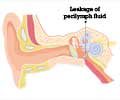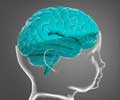Traumatic microbleeds following a brain injury may a potential biomarker to predict worse outcomes, finds a new study.

‘Microbleeds following brain injury may be a potential biomarker for recognizing which patients may be candidates for treatments that target vascular injury.
’





This study, which involved researchers from Cold Spring Harbor Laboratory in New York and the Uniformed Services University of the Health Sciences in Bethesda, Maryland, included 439 adults who experienced head injury and were treated in the emergency department. The subjects underwent MRI scans within 48 hours of injury, and again during four subsequent visits. Participants also completed behavioral and outcome questionnaires. The results showed that 31% of all study participants had evidence of microbleeds on their brain scans. More than half (58%) of participants with severe head injury showed microbleeds, as did 27% of mild cases.
The microbleeds appeared as either linear streaks or dotted, also referred to as punctate lesions. The majority of patients who exhibited microbleeds had both types. The findings also revealed that the frontal lobes were the brain region most likely to show microbleeds.
The patients with microbleeds were more likely to have a greater level of disability compared to patients without microbleeds. Disability was determined by a commonly used outcome scale.
The family of a participant who died following completion of the study donated the brain for further analysis. Dr. Latour's team imaged the brain with a more powerful MRI scanner and conducted detailed histological analysis, allowing the pathology underlying the traumatic microbleeds to be better described. The results showed iron, indicating blood, in macrophages (the brain's immune cells) tracking along the vessels seen on the initial MRI as well as in extended areas beyond that seen on MRI.
Advertisement
Source-Eurekalert















